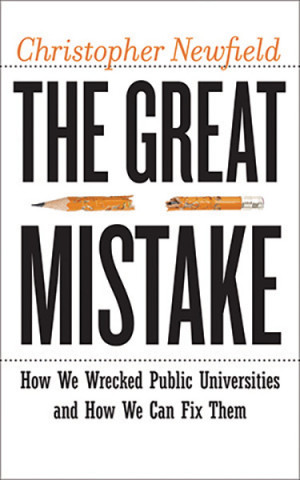By Stanton Glantz
cross-listed from KQED
Conventional wisdom says the UC and CSU funding crises are the inevitable result of recession-driven budget shortfalls, and the only solution is to soak students and their families.
But it's bunk. Shifting costs from the public to students is a deliberate act of public policy.
Well before the recession, Arnold Schwarzenegger and the UC and CSU presidents signed the Higher Education Compact. UC and CSU accepted huge cuts in state support and agreed to rapid annual tuition increases in exchange for a broken promise of future financial support.
And, though a Democrat, Jerry Brown is accelerating the transformation of higher education from a public good the people of California provide for the benefit of all to a private good students buy.
This is a radical reversal of the spirit that built California. But what's been done can be undone.
In fact, it would not cost much to push the "reset" button on California's entire higher education system, from community colleges to UC's graduate programs. We can roll fees back to 2000 levels, restore state funding and accommodate the students who've been forced out. And it would only cost the median taxpayer $49.
To today's jaded sensibilities that sounds far-fetched. But it wasn't so long ago that a passion for that kind of thinking built California in the first place.
This affordable "reset" will never happen unless university officials stop acting like highly-paid executives at financially failing corporations, start behaving like stewards of a public trust and start making the case to do it.
Nathan Hale, meet Jonathan Hale
15 hours ago




2 comments:
Classrooms are getting bigger and teacher quality is getting worse. What can we do to change this??
The problem is not how much money it would take--$49--but what that money is actually going toward. That's the black hole. There is no assurance it would be going to students, or instruction, or even to meaningful research. If it's just for more administration--more positions, more salaries, higher salaries--then folks are going to stay with "starve them out."
There has to be real reform in the public accounting for public universities. The claim that students are paying only a small percentage of the "cost" of instruction doesn't hold up, if one believes Charles Schwartz's analysis. The extra tuition dollars are going--through accounting jiggery-pokery to pay for the indirect cost shortfalls on research--and those are *administrative* expenses. No-one is going to pay $49 more for more administrators making 3x or 5x the median income in the state.
You have to hand it to the administrators, though. They are making sure the focus is on how devastating the cuts to instruction are, how that challenges "excellence"--though every year, no matter what the cuts, there's that "excellence" just like before. When they say they are cutting research to save instruction, then we know there's progress. When we hear they are cutting their own salaries and positions to save research, then we'll know we are on the right track.
The $49 thing is fine, but if it's repeated over every part of the state budget that's hurting, it's $49 x 10 or 20, and that's different. So the deal is: show how this $49 is more important than most anything else in the budget that's hurting. That most definitely will not be, "to save the pay scale of UC administrators."
Join the Conversation
Note: Firefox is occasionally incompatible with our comments section. We apologize for the inconvenience.